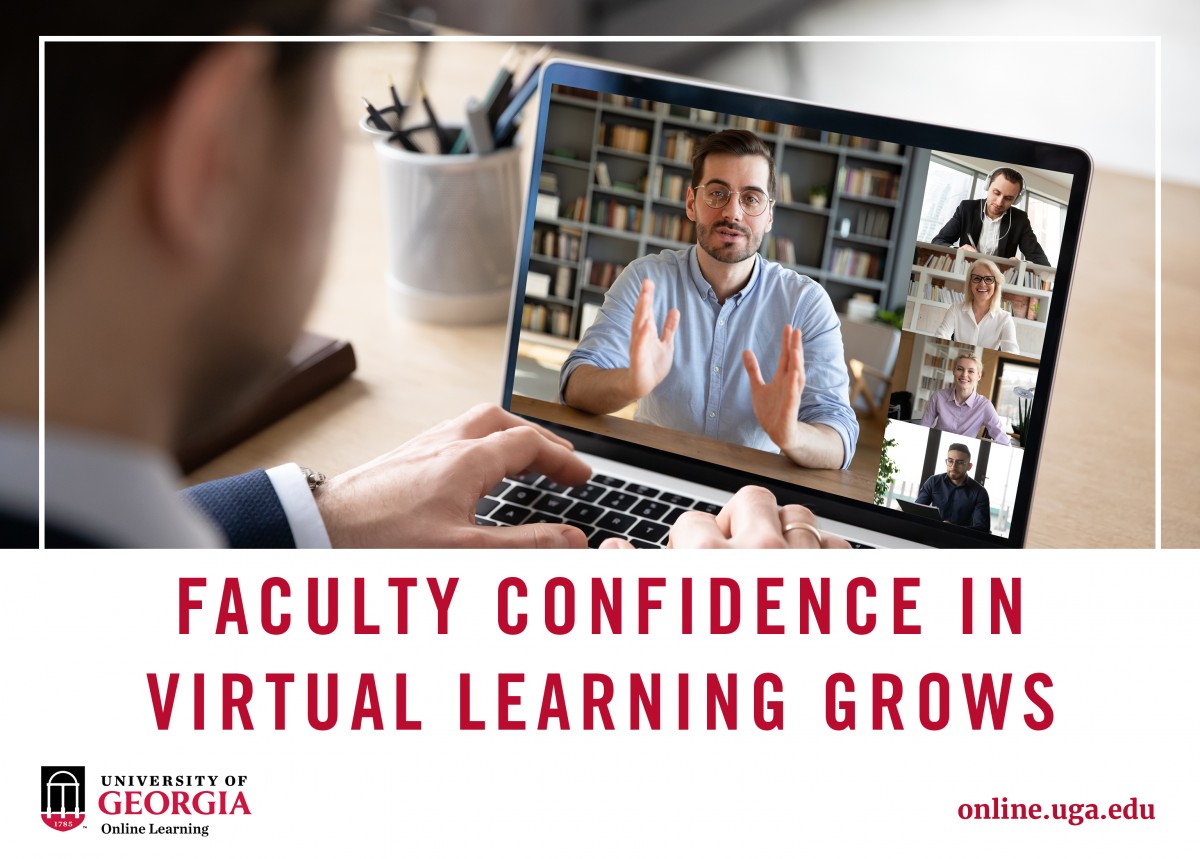Professors gain confidence in virtual learning
Professors gain confidence in virtual learning
As students have adjusted to the change, so have professors who don’t commonly teach an online or hybrid course. An Inside Higher Ed article shared results from recent surveys that show faculty’s increased confidence in virtual learning and how they’ve altered their online teaching methods to enhance student engagement.

In the most recent survey report, “Time for Class COVID-19 Edition Part 2: Planning for a Fall Like No Other,” from Every Learner Everywhere and Tyton Partners, instructors who shifted to more virtual learning due to the pandemic last Spring said they now have an understanding of how to utilize technology to “improve their own teaching and to enable student learning.”
Professor’s biggest concerns revolved around obstacles students may face such as balancing coursework with home and family responsibilities, student mental health and wellness, reliable internet access, and managing financial stress in light of COVID-19.
“Most of those challenges disproportionately affect students from low-income and other disadvantaged backgrounds, which is why two-thirds of surveyed instructors said they were concerned about equity gaps,” The article stated.
A Time for Class survey published in July showed 39 percent of instructors agreed with the statement “online learning is an effective method for teaching,” and 31 percent disagreed. In the follow up survey published October of this year, the question was asked again and 49 percent agreed with only 21 percent who disagreed.
Although the percentage of instructors who see online learning as effective may still be just under half — 49 percent — that’s up from the 39 percent who said so in the initial Time for Class survey published in July. One of the key take-aways was that faculty now feel better equipped for virtual learning than they did in the beginning of spring. The survey also illustrated that instructors feel much more suited to teach with technology this fall than ever before.
The survey also showed that four in five instructors said they had participated in professional development for digital learning to prepare for this fall. In addition, more than half of instructors credited their institutions with providing sufficient training for the fall, compared to fewer than two in five who felt that way pre-COVID.
One instructor said that her “course content is the most up-to-date it has been in several years with the extra prep I have been doing for the transition online.”
In regards to how they redesigned their courses, more than half of instructors said they had updated their learning objectives, assessments and activities—61 percent—and integrated the use of new digital tools, 60 percent. While nearly half, 46 percent, said they had embedded “more active learning elements (e.g., group discussion) to enhance student learning and engagement.”
In efforts to be more engaged, approximately two-thirds of instructors (65 percent) said they would engage in personal outreach and messages to students; that 65 percent represents a 66 percent increase over the last time the courses were taught.
“We hear, ‘I want to engage my students, give them more timely and personalized feedback, but it takes so much time to do it right and well,'” says Kristen Fox, director at Tyton Partners and project lead on the survey and report. “If I have 100 students, I’d ideally use the student learning data I have at hand” — maybe the results of more frequent quizzes, data on who is showing up in class or logging in to use the content — “to figure out how to triage and intervene in ways that aren’t killing me as a faculty member.”
All of the changes that instructors have made, with all of the help their institutions have given them, had professors stepping into their classrooms — virtual or otherwise — “pretty confident this fall.”
About three-quarters of those who were preparing to teach online (74 percent) and those who were preparing to teach fully in-person (73 percent) agreed with the statement “I am prepared to deliver a high-quality learning experience to my students this fall,” while only 10 percent disagreed.
